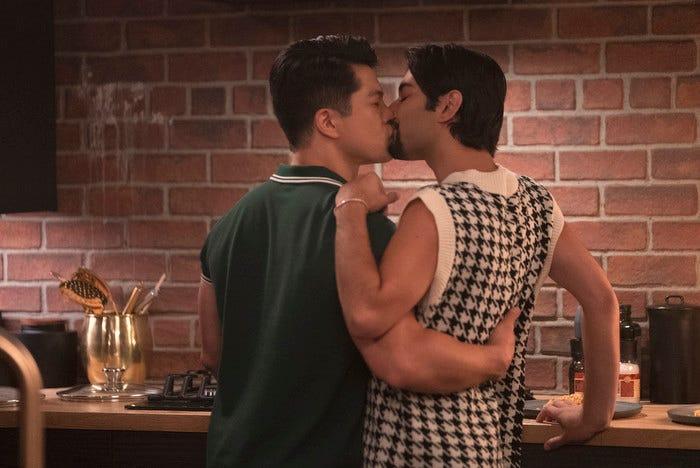If you feel like you’re noticing more LGBTQ characters onscreen, you’re not imagining things.
Across all broadcast networks, nearly 12% of regularly appearing characters are members of the LGBTQ community, according to GLAAD‘s annual “Where We Are on TV” report. The report documents LGBTQ representation across broadcast, streaming and cable series for the 2021-22 season ending in May; GLAAD works with networks to confirm which characters are members of the LGBTQ community.
That broadcast total is up 2.8 percentage points from last year’s report, and marks a record-high percentage of queer characters in the 26 years since the advocacy group began measuring representation on TV.
Progress didn’t stop with broadcast’s new record. Cable series saw an increase in representation, too, with 138 characters counted as members of the LGBTQ community, up from 118 from last year (but down from 215 in 2020). In all, the report counted 637 LGBTQ characters on TV.
GLAAD also added five newer streaming services to its report – Apple TV+, Disney+, HBO Max, Paramount+ and Peacock – which joined Amazon, Hulu and Netflix. The additional streamers, and more programming, led GLAAD to count 358 LGBTQ characters on streaming shows, up from 217 last year.
Netflix had the most with 155 (up from 110 last year), followed by HBO Max with 71 and Amazon and Hulu with 36 apiece (up from 12 and 19 respectively). Apple TV+ had just six, but the results are skewed by the number of shows each service offers.
On broadcast, CW had the most LGBTQ representation among series regulars, followed by Fox On the major networks, 56 of the characters – or 40% – were lesbians – up from 34% last year. And for the fourth year in a row, GLAAD found that most LGTBQ characters on broadcast TV (58% this year) were people of color.
“To see not only the numbers go up, but particularly to see improvement when it comes to parts of the community who have been left out of the story and left offscreen is a really great change to see this year, and something that we’re very excited about,” says Megan Townsend, GLAAD’s director of entertainment research and analysis.
In case you missed: How Lil Nas X, Lena Waithe and ‘Sex Education’ are championing Black, queer love stories
Townsend points out the abundance of lesbians onscreen is a far cry from the 2015-16 TV season, when the “bury your gays” trope – in which bisexual and queer women were often killed off – proliferated. Pointing this out may have invoked change; Townsend didn’t find the new statistic all that surprising.
The report mentions many areas still in need of improvement. For starters, no broadcast network has created a majority-LGBTQ cast of characters for primetime scripted series, as more narrowly-focused programmers like FX (“Pose”), Showtime (“The L Word” and “Queer as Folk”) or Netflix (“Q-Force”) have done.
“As we’re looking toward the next year of broadcast shows and seeing the success of a lot of these shows, there’s very much an opportunity here to bring in audiences who are currently turning to other platforms to find that programming,” Townsend says. “That’s where we really want to see broadcast step up in hopefully the next year or two, with introducing a show that is more along those lines.”
The overall number of transgender characters on TV increased by 13 characters across broadcast, cable and streaming, often in comedies.


“Having trans characters in comedy shows where they get to own their story and make the jokes rather than be the object of the joke is such a powerful tool to connect with audiences but also let people laugh and find a connection in a way that is not dehumanizing,” Townsend says.
GLAAD’s study counts characters who have appeared or are set to appear on primetime series between June 1, 2021 and May, 31, 2022. The organization’s staff monitors entertainment year-round and works with networks and streamers to confirm data on LGBTQ characters.
Have you seen? ‘With Love’ on Amazon is the warm, welcome hug you’ve been waiting for
This article originally appeared on USA TODAY: LGBTQ representation reaches all-time high on broadcast TV, GLAAD says




